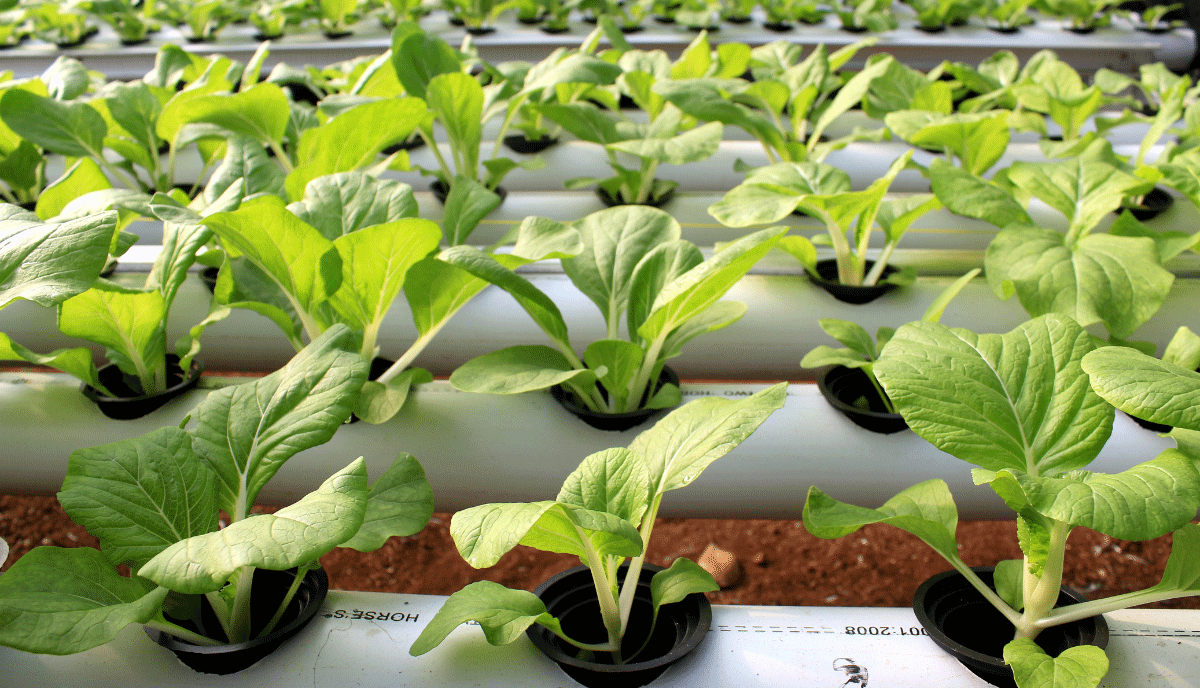
Winter can be a challenging season for gardeners, but a greenhouse provides an excellent solution to keep the harvest in operation. With correct crops and care, a greenhouse can convert the coldest months into a productive period. This guide will explore ten plants that are particularly suitable for winter greenhouse cultivation, detailing its growth requirements and benefits.
10 best plants to grow in a greenhouse in winter
1. Microgreens

Microgreens are ideal for greenhouse cultivation in winter due to their minimum space requirements and rapid growth cycle, often ready for harvest in just 2-3 weeks. They thrive in temperatures between 60 ° F and 75 ° F and can grow in low light conditions, although supplementary lighting may increase its growth. Microgreens are a dense option in nutrients, which provides fresh and tasty addition to meals during the winter months.
2. Rabies


Rabis are a rapid growth crop, usually ready for harvest within 3-4 weeks. They can tolerate temperatures as low as 40 ° F but prefer a range of 50 ° F to 65 ° F. radishes can be handled in low light conditions, which makes them a practice winter greenhouse harvest. They require well drained soil and moisture consisting of optimal growth and crispy and tasty roots.
3. Garlic


The garlic is usually planted in autumn and requires a long growth season, with a harvest at the end of spring or early summer. It can support temperatures and winter benefits of the stable environment of a greenhouse. Garlic needs a cold period for a successful development of the bulb, with temperatures of around 32 ° F to 50 ° F ideals. It requires well drained soil and moderate irrigation.
4. Onions


Onions can start in the winter for a summer harvest in early summer. They prefer colder temperatures, around 35 ° F to 55 ° F, and can be grown in pots or directly on the ground. Onions require 6-8 hours of sunlight daily, so that supplementary lighting may be necessary during the shortest winter days. They take approximately 100-175 days to mature, depending on the variety.
5. beans


The beans are resistant and can be sown at the end of autumn for a spring harvest at the beginning of spring. They can tolerate temperatures as low as 15 ° F, making them suitable for winter greenhouses. The beans require 80-100 days to mature and need a well drained soil and regular irrigation. They benefit from being planted in a sunny place in the greenhouse.
6. Green winter salad (like Mizuna, Mustaza Greens)


Winter salad vegetables, such as Mizuna and Musteard Greens, can grow well at colder temperatures, typically between 40 ° F and 60 ° F. They are rapid producers, often ready to harvest 4-6 weeks. These green prefer at least 4 hours of sunlight daily and wet and well drained soil. They can be triggered continuously for a constant supply of fresh vegetables.
7. leeks


Leeks are resistant and can spend winter for a spring harvest at the beginning of spring. They thrive in temperatures between 45 ° F and 75 ° F and take approximately 100-120 days to mature. Leeks require full sunlight and rich and well drained land. They benefit from regular irrigation and padding to maintain moisture and soil temperature.
8. Nabos


Nabos grow well at cold temperatures, ideally between 40 ° F and 70 ° F. They take about 30-60 days to mature, depending on the variety. Nabos need at least 4-6 hours of sunlight daily and fertile and well drained soil. Regular irrigation is even necessary for the development of the root and to prevent wood.
9. Brussels outbreaks


Brussels shoots can be started in winter for a spring harvest. They prefer colder temperatures, around 45 ° F to 75 ° F, and require a long growth season, typically 100-200 days. Brussels outbreaks need full sunlight and nutrient rich soil and well drained. They benefit from regular feeding and consistent humidity.
10. Pak Choi


Pak Choi tolerates the coldest temperatures and can be grown throughout the winter in a greenhouse. It prefers temperatures between 50 ° F and 70 ° F and mature in approximately 30-45 days. Pak Choi requires at least 3-5 hours of sunlight daily and humid and fertile land. It is a great option for continuous harvest, since it grows quickly after cutting.
Tips for wintering in winter
Temperature control
Maintaining an appropriate temperature is crucial for winter greenhouse crops. A thermometer helps monitor, and heating systems may be necessary to maintain the environment within the ideal range for each plant.
Lightning
Due to the shortest hours of daylight in winter, supplement with cultivation lights ensures that plants receive enough light for adequate growth and development.
Ventilation
Good air circulation is key to preventing fungal diseases and maintaining a healthy growth environment. Use vents or fans for an effective aerial movement.
Soil management
High quality floor is essential, and the use of raised pots or beds can offer better control over soil conditions, which is particularly important in winter.
Clean your greenhouse
A clean greenhouse is vital for healthy growth of plants. Regularly remove the remains of the plants, disinfect the surfaces and maintain good hygiene to prevent the problems of diseases and pests.
With these plants and tips, your greenhouse can be a vibrant and productive space even during the cold winter months, providing fresh products and the joy of gardening throughout the year.







